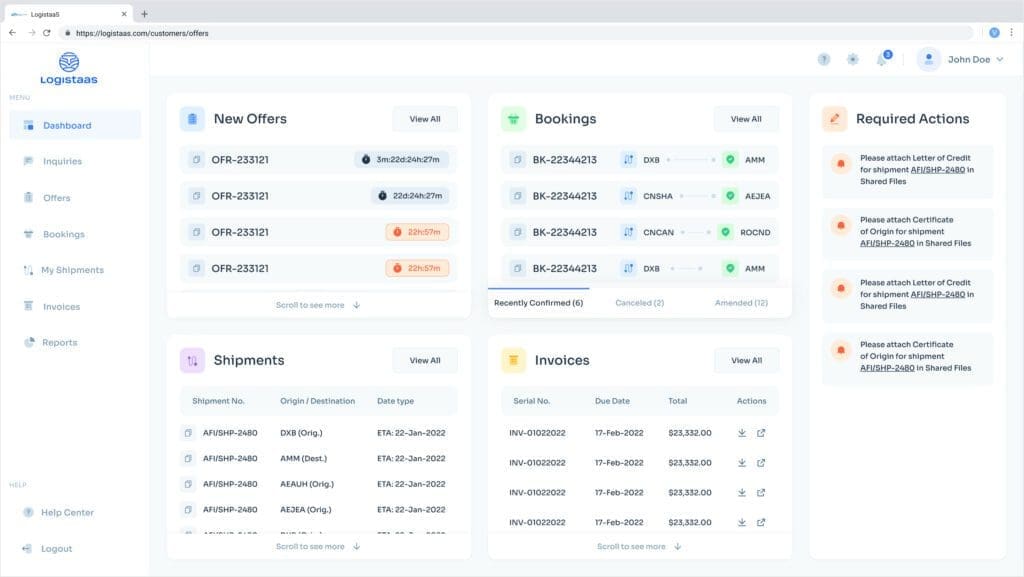
The Evolution of Digital Forwarders: How TMS Empowers Freight Management
In today’s rapidly evolving logistics landscape, the emergence of the “digital forwarder” has become a defining trend. A digital forwarder operates within the realm of online interactions, leveraging a mix of advanced technologies such as websites, mobile apps, and automated messaging services. This transformation, while conceptually straightforward, presents complex challenges and abundant opportunities. This article delves into the intricacies of becoming a digital freight forwarder and highlights the pivotal role that Transportation Management Systems (TMS) play in catalyzing this transformation.
Defining the Digital Forwarder
At its core, a digital freight forwarder conducts its operations exclusively through digital channels, offering services and engagements solely via online platforms. While this definition may appear uncomplicated, its implementation is far from simple. Forwarders acknowledge the necessity of digital transformation and invest resources in developing online portals and mobile apps that provide a glimpse into the world of digitization. However, the essence of a “digital freight forwarder” transcends these partial measures, demanding the overcoming of substantial obstacles.
Navigating Complete Digitization
Freight forwarding encompasses intricate processes, ranging from pricing and booking to shipping and tracking. The digitization of each process demands two pivotal attributes: reliability and user-friendliness. Customers should experience enhanced value through digital interactions compared to traditional communication methods. The digital interface must intuitively guide customers, ensuring a streamlined and efficient experience.

As the industry advances towards complete digitization, the integration of real-time data and processes becomes paramount. This integration empowers customers with accurate and up-to-the-minute information, enabling confident decision-making. Moreover, the fusion of technology and design thinking ensures that the digital platform caters to users of varying expertise, simplifying complex procedures, and enhancing engagement. By embracing this holistic approach, the industry modernizes its operations and customer satisfaction, ushering in a new era of efficient and customer-centric freight forwarding.
The Challenge of Real-Time Data Integrations

A significant hurdle in achieving comprehensive digitization lies in the reality that freight forwarders act as coordinators, not proprietors, of transportation assets. These coordinators depend on carriers for real-time data encompassing pricing, sailing schedules, booking confirmations, and shipment tracking. However, the digital tools and integration points provided by carriers have been historically limited. While notable progress has been made, direct integration points with carriers remain scarce, hindering the seamless provision of real-time digital forwarding services.
This scarcity of direct integration points challenges the industry’s drive toward real-time digitization. The absence of standardized data exchange methods among carriers creates a fragmented landscape. Each carrier’s system may necessitate a distinct approach, leading to inefficiencies and complexities for forwarders seeking to access crucial data promptly. As a result, achieving the desired level of integration remains a formidable obstacle, requiring collaborative efforts and innovative solutions to bridge the gap between forwarders and carriers in the digital realm.
Leveraging Transportation Management Systems (TMS)

The pivotal role of TMS in propelling the evolution of digital forwarders cannot be understated. Various approaches can be adopted, each yielding differing levels of integration and operational efficiency.
- Digital Facade with Manual Operations: In this scenario, forwarders design a user-friendly digital interface for customers while retaining manual operational processes. However, this approach often leads to inefficiencies stemming from redundant tasks and human errors.
- Hybrid Integration: Many modern digital forwarders follow this path, developing digital interfaces for clients and integrating them with TMS to manage backend operations. While superior to the previous approach, inherent limitations arise due to the distinct design of the interface and TMS.
- Holistic TMS Integration: A forward-looking trajectory involves TMS driving the transformation of traditional forwarders into digital entities. With a focus on optimizing backend operations, TMS possesses the resources and incentives to integrate seamlessly with all stakeholders within the forwarding ecosystem. By delivering a client-centric portal that harmonizes with digitized backend operations, TMS seamlessly orchestrates the transition of forwarders into fully-fledged digital entities.
Navigating the Path Ahead

Amidst the labyrinth of challenges and prospects, the freight forwarding industry is making remarkable strides in embracing digitization. Evident progress is observable through standardization efforts by organizations like the Digital Container Standards Association (DCSA), which aims to standardize electronic file formats for interactions with carriers, thereby facilitating smoother integration. As carriers and governmental bodies embrace these standards, the momentum of transformation is poised to accelerate. The horizon holds promise for the emergence of fully digital freight forwarding, where integrated TMS solutions will empower forwarders to provide efficient, dependable, and seamless services to their clientele.
In summary, the evolution of digital forwarders constitutes a multifaceted journey marked by challenges and opportunities. TMS is a transformative agent in this journey, offering integrated solutions that align customer-facing interfaces with digitized backend operations. As the industry continues to innovate and adapt, the vision of comprehensive digital freight forwarding gains momentum and is poised to reshape the dynamics of global cargo movement.

